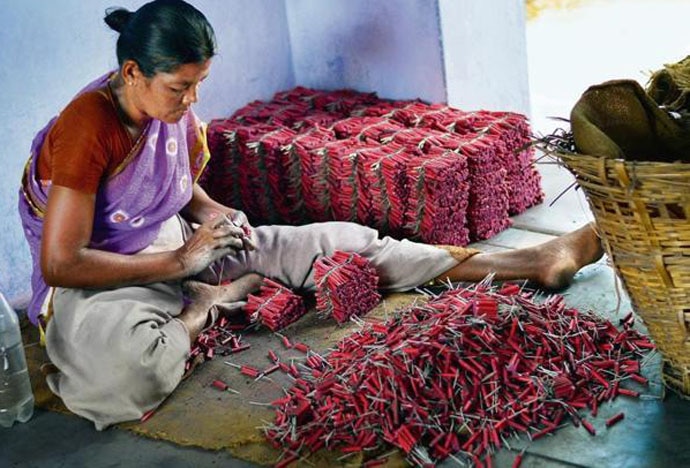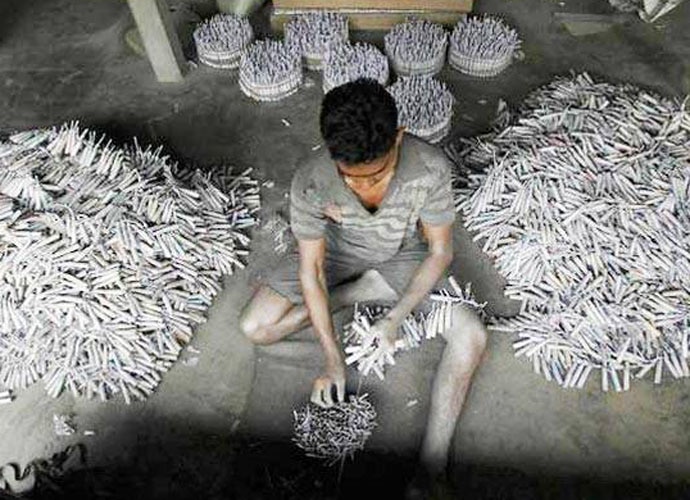Don't make firecracker bans a 'Hindu-Muslim' event. These are vital for all

For as long as I remember, I have been hearing about the ‘Say No to Firecrackers’ campaign in schools. It must have been around two decades since the call to ban crackers was first raised. The central government and state governments have been running the campaign every year. This has happened irrespective of which party has been in power at the Centre and in the states.
Given the emergency situation that prevails with regard to our air quality, citizens in no civilised society would wait for the courts or the government to issue advisories on ‘good behaviour’. Unfortunately, we depend on them - and still don’t follow the orders issued by either.

Air pollution in Delhi became part of the public discourse in the late 1990s, triggered largely by extreme levels of pollution due to vehicles, leading to the Supreme Court of India passing a landmark judgment in 1998, setting April of 2001 as the deadline to replace or convert all public transport vehicles such as buses, three-wheelers and taxis to CNG.
This order gradually had an impact on the overall air quality of Delhi, improving it by a few notches.
This state of ‘well-being’ was short-lived though as it only addressed one elephant in the room, while ignoring the many others.
Private vehicles and diesel SUVs continued to inundate the roads of Delhi, rapid urbanisation led to more infrastructure development, leading to densification and construction, mostly through cutting trees and forests.
So, a city that had the best per capita tree population in the world fell from that glory, hitting a deficit of over nine lakh trees.
Rampant production of waste (over 10,000 metric tonnes a day as of today) and centralised waste management systems created mountains of garbage in different parts of the city (currently the active landfills are in Bhalswa, Ghazipur and Okhla), many competing with one of the tallest historical monuments of Delhi, the Qutab Minar.
The constant fires at these landfills add to the toxicity of the air, apart from, of course, posing a direct hazard to people.
Almost at the same time when Delhi’s public transport shifted to CNG, there was an acute groundwater crisis in the neighbouring states of Punjab and Haryana, leading to a delay in sowing of paddy, resulting in late harvesting. To deal with the agrarian pressure of harvesting paddy and sowing the next crop of wheat, farmers switched to mass burning of stubble in their fields, yet another reason for pollution in many north Indian cities.

It’s difficult to justify any of these ‘developments’ - be it cutting of trees for infrastructure development, rampant construction and demolition activities leading to dust pollution, waste generation or even stubble burning - but the most impossible indulgence has been the blasting and burning of firecrackers during Diwali.
Historically, a festival of lights has turned into a festival of firecrackers, turning many north Indian cities into a gas chamber on Diwali night and the morning after.
Three children petitioned the highest court of our country, the Supreme Court, and finally found justice with the right to clean air, or, let us say cleaner air, on Diwali. The Supreme Court imposed a blanket ban on the use of polluting firecrackers in Delhi, only allowing ‘green’ firecrackers this year - ones that don’t exist!
One needs to understand that it’s a significant judgment as firecrackers have an adverse impact on human health, mostly affecting pregnant women, children and the elderly.
As per the World Health Organisation and the Central Pollution Control Board, air pollution increases 29 times on the day of Diwali, leading to most hospitals being inundated with patients with respiratory emergencies, many losing lives.
Before jumping to brand the Supreme Court's decision as 'an attack on the Hindu faith', as some quarters have done, one needs to read the judgment carefully - it states that bursting firecrackers is allowed for two hours on Diwali, only for 30 minutes on Christmas, and 35 minutes on New Year’s eve.
With a turnover of Rs 2,000 crore a year, firecrackers is a highly unregulated and unorganised business in India.
There are several litigations in several courts of our country along with several research documents in the public domain that establish the rampant use of child labour in this industry, with adverse impacts on the life and health of all children working in the industry.
The irony is that the poorest of poor children manufacture these firecrackers - and privileged children use it for recreation.
Several studies, especially done by the medical fraternity, have established that the chemicals used in the firecrackers such as aluminium, banned cadmium compounds, lead, barium nitrates, arsenic compounds, etc., have adverse impacts on children’s health, before combustion (in the case of the children making the firecrackers) and after combustion (on the children who are bursting these firecrackers).
The Supreme Court, however, has allowed one form of crackers in Delhi this year – ‘green’ firecrackers. Many of us find ‘green’ firecrackers an oxymoron because it is almost saying that tomorrow we would have ‘green’ coal, ‘green’ air conditioners, ‘green’ SUVs, a pointless narrative.
However, our government claims that there is ample research at their disposal to establish that there could be a ‘non-polluting’ firecracker. We have to wait and watch if anything of that sort actually exists.
One understands that this ban on the manufacture, sale and bursting of toxic firecrackers will affect the livelihoods of half a million people and one needs to be empathetic to them as well.
My limited point is that when a million and a half people die in my country each year due to air pollution (Lancet report), over one lakh children under the age of five die each year due to air pollution, empathy will need to find a new meaning.
We need to find alternative livelihoods — ones that don’t kill our children.
We need to find better ways of practising faith and tradition — ones that don’t make us regressive and sick.

